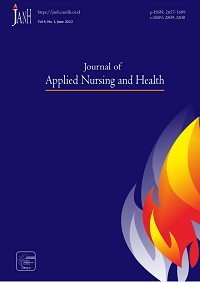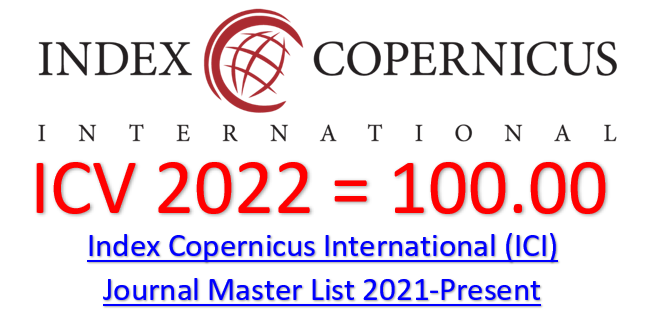The Effectiveness Of Elderly Exercise In Decreasing The Level Of Insomnia
DOI:
https://doi.org/10.55018/janh.v4i1.55Keywords:
Elderly exercise, Insomnia, ElderlyAbstract
Background: Aging is not a disease for the elderly and is not an obstacle to being able to maintain productivity and independence in carrying out daily life days. However, entering old age, many experience physical and mental setbacks, which can cause problems with disease, depression, and sleep disturbances. The purpose of this study was to determine the effectiveness of elderly exercise in reducing the level of insomnia in the elderly
Methods: The research method used is the Quasy Experimental with the design one-group Pretest-Posttest population is the elderly who experience insomnia in Posbindu Pesona UPT Puskesmas Agel Lahat with a sample of 50 respondents
They were taken on the total side. Data were collected from respondents by distributing questionnaires before and after counseling to respondents.
Results: The results showed that the initial observation found that 50 41 respondents (82%) had moderate insomnia after being given the elderly exercise technique. 46 respondents (92%) with mild insomnia and four (8%) with moderate insomnia experienced mild insomnia. The results of the Defendant T-Test showed significant results P = 0.00. This shows the effect of the Effectiveness of the Elderly Gymnastics Technique on the reduction of Insomnia Levels. Conclusion: There is a significant difference in the level of insomnia in elderly mothers between before being given the elderly exercise technique and after being given the elderly exercise technique.
Downloads
References
Abdol Aziz Saleh, H., & Mohamad Al Henawy, S. (2019). The effect of Qualitative Drills In terms of Bio-Dynamic Analysis on Technical performance level to Front Somersault Tuck in gymnastics. Assiut Journal of Sport Science and Arts, 2019(1), 32–54.
Alhenawy, S. (2020). Effectiveness of Agility Ladder Drills on Some Physical Variables and the Level of Technical Performance of some Dismounts on High Bar Apparatus in Gymnastics. International Journal of Sports Science and Arts, 15(015), 126–144.
Aurela, B. S. (2021). IDENTIFICATION OF SUPPORTING FACTORS AND INHIBITING FACTORS THE ACHIEVEMENT OF GYMNASTICS ATHLETES AT THE EAST JAVA PROVINCE. Jurnal Prestasi Olahraga, 4(9), 27–34.
Azizah, L. M. (2011). Keperawatan Jiwa (Aplikasi Praktik Klinik). Graha Ilmu.
Cervin, G. (2020). Ringing the Changes: How the Relationship between the International Gymnastics Federation and the International Olympic Committee Has Shaped Gymnastics Policy. Sport History Review, 51(1), 46–63.
Daryaman, U. (2021). Pengaruh Kegel Exercise Terhadap Inkontinensia Urine Pada Lansia. Jurnal Sehat Masada, 15(1), 174–179.
de Aguiar, B. C. (2020). Teaching for Motivation and Awareness in Children’s and Youth Gymnastics. Applied Positive Pedagogy in Sport Coaching: International Cases.
Dinkes. (2013). Pengantar Kesehatan Kerja. Bidang Yankes Dinkes Kota Pasuruan. https://yankeskotapas.wordpress.com/2013/04/17/pengantar-kesehatan-kerja/
Ilham, T. R., Pujianto, D., & Arwin, A. (2021). Pengaruh Latihan Plyometrics (Hurdle Hops dan Ladder Drill) Terhadap Kecepatan Dribbiling Futsal Putri Tim Jugador Bonita Rafflesia. SPORT GYMNASTICS: Jurnal Ilmiah Pendidikan Jasmani, 2(1), 34–45.
Kholifah, S. N. (2016). Buku Keperawatan Gerontik. Pusdik SDM Kesehatan.
Nassib, S. H., Mkaouer, B., Riahi, S. H., Wali, S. M., & Nassib, S. (2020). Prediction of gymnastics physical profile through an international program evaluation in women artistic gymnastics. The Journal of Strength & Conditioning Research, 34(2), 577–586.
Palmer, C. (2022a). Aesthetics and symbolism in artistic gymnastics: From martial discipline to ritual practices embodied in performance. In Training the Body (pp. 111–125). Routledge.
Palmer, C. (2022b). Aesthetics and symbolism in artistic gymnastics. Training the Body: Perspectives from Religion, Physical Culture and Sport.
Pavlin, T. (2018). HISTORICAL OVERVIEW OF GYMNASTICS AND (SCHOOL) PHYSICAL EDUCATION IN SLOVENIA. Science of Gymnastics Journal, 10(1).
Petran, D. (2020). Development of Motor Qualities Through the Specific Means of Gymnastics. Arena-Journal of Physical Activities, 9, 123–136.
Robinson, D. B., Randall, L., & Andrews, E. (2020). Physical education teachers’(lack of) gymnastics instruction: an exploration of a neglected curriculum requirement. Curriculum Studies in Health and Physical Education, 11(1), 67–82.
Sharma, A. (2016). Peripheral Vascular Disease in Primary Care. CRC Press. https://doi.org/10.1201/9781315383781
Smeltzer, S. (2014). Textbook of Medical Surgical Nursing (8th ed.). Lippincott Williams.
Usiati. (2011). Keterampilan Keperawatan Dasar, Paket 1. Erlangga Medical. Series.
WHO. (2017). Global Health Observatory (GHO) data. World Health Organization. http://www.who.int/gho/ncd/risk_factors/bloaod_pressure_prevalence_text/en/
Downloads
Published
How to Cite
Issue
Section
License

This work is licensed under a Creative Commons Attribution-ShareAlike 4.0 International License.

























